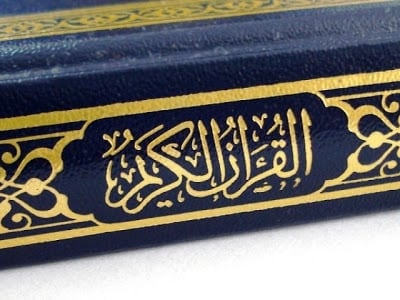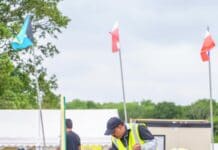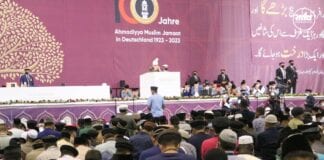By Mehpara Khan
If you remember a time before the internet you probably remember that back in the day watching Jalsa in real time was simply inconceivable. These days, thanks to the blessings of MTA, connecting to Jalsa is as easy as tapping an icon, double clicking on a browser or simply turning your TV on, no matter where in the world you live. But it wasn’t always so simple. Below are a few ways international Ahmadies used to get the blessings of Jalsa before MTA and the internet made it easy.
Newspapers and periodicals:
It’s a tradition that still continues today in papers like Badr and Al Fazl in which Jalsa speeches and the Juma Khutba were captured in writing and published for the masses. With digitisation and the internet we’ve seen many long standing publications come to an end, but by the Grace of Allah, Al Fazl and Badr are still accessible and read by many Ahmadies in India, Pakistan and around the world.
Cassette tapes:
Back before iTunes, mp3 players and CD’s, there existed small plastic squares which, when inserted into radios, would produce sound. Crazy right? These retro contraption used to have Huzoor’s Jalsa addresses recorded onto them and mailed throughout the world. Unlike today, where copies of things can be made in an instant, back then I can’t even comprehend how much manpower and time it would’ve taken to send hundreds of cassettes to the various Jamaat’s around the world. The cassettes used to arrive up to two months after Jalsa. I know in New Zealand, copies were made and distributed to each household so that everyone could benefit from the guidance of our Khalifa.
Teleconferencing:
I remember hearing about a time in the early ’90s where Jamaat’s would quite literally phone into Jalsa to hear the proceedings. It was the first time Ahmadies around the world could experience Jalsa in real time. Back then our Jamaat in New Zealand was small enough to fit in a standard sized living room, huddled around the home speakerphone. While we shared in the excitement, it wasn’t without its difficulties. Conflicting time zones aside, the cost to call the UK at the time was around NZ$4 per minute. The line would also disconnect several times during Khalifa Rabe’s address due, according to the frustrated and overwhelmed operator, to overloading.
Video tapes
As time progressed so did technology and by the mid 90’s we were receiving video tapes in the mail. For the first time you could actually see Khalifa Rabe giving his address – a huge upgrade from the dim cassette tapes of the ’80s. These video tapes used to arrive in the mail up to a month after Jalsa. Again our Jamaat used to have the video tapes copied and distributed to every household. I’m sure if you looked, you would find old Jalsa videos in the storage cupboards of Ahmadies around the world.
When you look at the real struggle and commitment Ahmadies made to engaging in Jalsa, you can’t help but be grateful for the ease we have now through MTA. Thanks to the foresight and genius of our fourth Khalifa we now have immediate, crystal clear connection to Jalsa, a far cry from the equipment used only 25 years ago. And when you know what people went through to have a smidgeon of what we have now, it almost makes you feel obligated to make the most of MTA and its various platforms. But with the way technologies advance, one day the next generation will look back at us and say… “Do you remember when you had to actually click a button to watch Jalsa? Geez those days were rough….”




